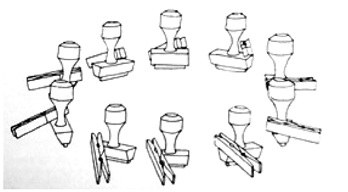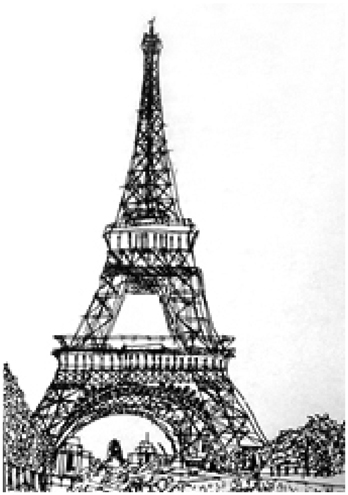J Korean Neuropsychiatr Assoc.
2012 Nov;51(6):367-377.
A Constructive Philosophical Approach to the Infantile Autism
- Affiliations
-
- 1University College, Ajou University, Suwon, Korea. ajouphil@ajou.ac.kr
- 2Institute of Mental Health, Hanyang University, Seoul, Korea.
Abstract
- Reconstruction of the infantile process of acquiring a language shows that in order to initially develop the object scheme, children must have an ability to maintain the intensity of their sensory stimulation and their own sense of synaesthesia. Such a somatic condition concedes children to acquire the object scheme from her/his subjective perspective. This becomes likely through the symptomatic relation that is made when children partition the undifferentiated senses as a whole. The next significant step in acquisition of a language is that children should synchronize their own object scheme with that of the existing language community; this sensible phenomenon requires mutual role change and change of perspective by children. In addition, autism research holds a significant meaning not only as a psychiatric study but also as a sound philosophical investigation. In particular, the logical reconstruction of language acquisition is used be restricted to normal linguistic condition and this attempt only explains half of the entire study of development of language. The logical reconstruction of language acquisition can be faultless only when the linguistic disorder is also philosophically understood.
Keyword
MeSH Terms
Figure
Reference
-
1. Kanner L. Autistic Disturbance of Affective Contact. Nervous Child. 1943. 217–250.
Article2. Asperger H. Die 'aunstisehen Psychopathen' im Kindesalter. Arch Psychiatr Nervenkr. 1944. 117:76–136.
Article3. Dzikowski S, Vogel C. Störungen der sensorischen Integration bei autistischen Kindern. 1993. Weinheim: Deutscher Studien Verlag;12–17.4. Baron-Cohen S, Leslie AM, Frith U. Does the autistic child have a "theory of mind"? Cognition. 1985. 21:37–46.5. Jaspers K. Allgemeine Psychopathologie. 1959. 7th ed. Berlin, Germany: Springer.
Article6. Piaget J, Cook M. The Origins of Intelligence in Children. 1952. New York: International Univ. Press;263–357.
Article7. Maurer D. Baron-Cohen S, Harrison JE, editors. Neonatal Synaesthesia: Implications for the Processing of Speech and Faces. Synaesthesia: Classic and Contemporary Readings. 1997. Oxford: Blackwell;224–242.
Article8. Ikegami T, Zlatev J. Ziemke T, Zlatev J, Frank R, editors. From pre-representational cognition to language. Body, Language and Mind, Embodiment. 2007. vol. 1. Berlin: Mouton de Gruyter;197–240.
Article9. Peirce CS, Welby LV. Semiotics and Significs: The Correspondence between Charles S. Peirce and Victoria Lady Welby. 1977. Bloomington: Indiana Univ. Press.
Article10. Scherer BM. Prolegomena zu einer einheitlichen Zeichentheorie: Ch.S. Peirces Einbettung der Semiotik in die Pragmatik. 1984. Tübingen: Stauffenburg Verlag.
Article11. Hong SK. Pratîtysamutpāda bei Nāgārjuna. 1993. Saarbrücken: Universität der Saarlandes;124–154. Dissertation.
Article12. Wittgenstein L. Philosophische untersuchungen. 2006. Seoul: bkworld;349.
Article13. Hong SK. Buddhism and Analytic Philosophy. 2006. Seoul: WooRi;74–77.14. Lorenz K. Salamun K, editor. Dialogischer Konstruktivismus. Was ist Philosophie? 1986. Tübingen: Mohr.15. Notbohm E. Ten Things Every Child with Autism Wishes You Knew, Wrongplanet.net, The Online Resource and Community for Autism and Asperger's. updated 2011 Feb 22; cited 2012 Jan 7. Available from http://www.wrongplanet.net/article178.html.16. Williams D. Autism and Sensing. 1998. London: Jessical Kingsley Publishers Ltd.17. Mottron L, Belleville S. A study of perceptual analysis in a high-level autistic subject with exceptional graphic abilities. Brain Cogn. 1993. 23:279–309.18. Boucher J, Lewis V. Unfamiliar face recognition in relatively able autistic children. J Child Psychol Psychiatry. 1992. 33:843–859.19. Shah A, Frith U. Why do autistic individuals show superior performance on the block design task? J Child Psychol Psychiatry. 1993. 34:1351–1364.
Article20. Grandin T. Thinking in Pictures: Autism and Visual Thought. 1996. New York: Vintage Books.
Article21. Stokes S. Increasing Expressive Skills for Verbal Children with Autism, Special Education Services. cited 2012 Jan 8. Available from http://cesa7autism.org/autism/verbal/verbal11.html.
Article22. Baron-Cohen S, Bolton P. Autism: the Facts. 1993. Onford: Oxford Univ. Press;57.
Article23. Kennedy DP, Squire LR. An analysis of calendar performance in two autistic calendar savants. Learn Mem. 2007. 14:533–538.24. Mottron L, Belleville S. Perspective production in a savant autistic draughtsman. Psychol Med. 1995. 25:639–648.25. Paek MJ, Kang UG. Phenomenological psychopathology. J Korean Neuropsychiatr Assoc. 2011. 50:97–115.26. Hobson P. Sims A, editor. The semantics of autism. Speech and Language Disorders in Psychiatry. 1995. London: Gaskell;174–182.
- Full Text Links
- Actions
-
Cited
- CITED
-
- Close
- Share
- Similar articles
-
- Comparison of the Autism Diagnostic Observation Schedule and Childhood Autism Rating Scale in the Diagnosis of Autism Spectrum Disorder: A Preliminary Study
- Do Savant Syndrome and Autism Spectrum Disorders Share Sex Differences? A Comprehensive Review
- Screening Instruments for Autism Spectrum Disorder: Mini Review
- Recurrence of Infantile Cortical Hyperostosis: A Case Report
- The Translation of the Term 'Autism Spectrum Disorder' in Korean



